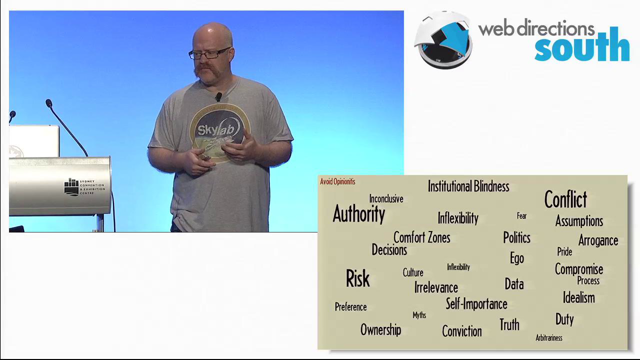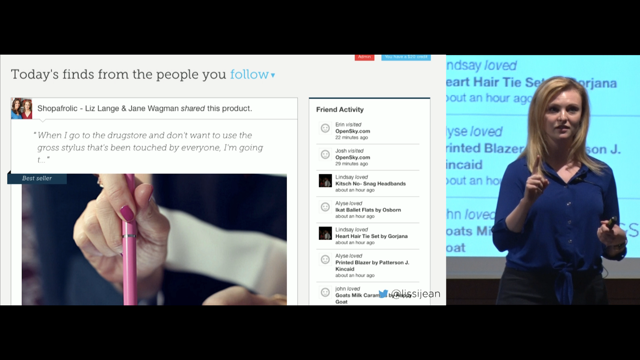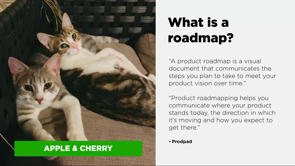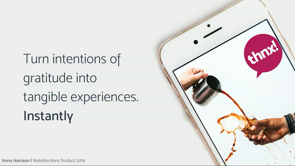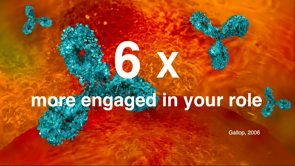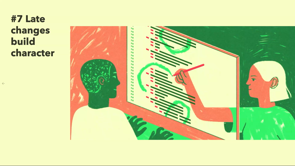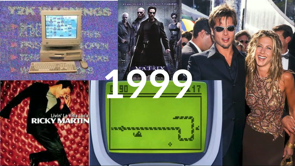The power of an individual product strategy, and how it helps with everything.
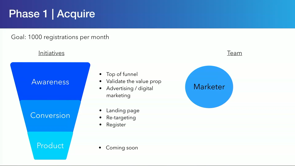
(upbeat music) (audience applauds) - Yeah, thanks everyone.
So yeah, as of last week, I'm now a product manager, at Airwallex, which is a cross-border international payment company. Before that, the last 18 months I spent working at MessageMedia, which is a customer engagement platform over messaging and then I had a long stint six years at PEXA and the whole bunch of PEXA crew at the back, which is a startup in digital property settlements. So I don't have a photo of my dog, but he is a bit of a legend and he is from Pet Rescue. So thank you very much.
But today I wanna talk to you about a bit of an epiphany moment share an epiphany moment that I had, about 18 months ago, when I discovered what I call, an individual product strategy.
So it's a strategy for my product, which I found really powerful and it allowed me to align my team, manage my stakeholders and test my assumptions really really early. So, in my experience and I'm sure a lot of you have had this experience at the start of any new product initiative, there's always this incredible sense of urgency to just get started and even if this is an idea that's kind of floated around the exec's offices for six or 12 months, when they kind of the gun goes off and we start with building this product.
It's kind of this sense of getting going and so rather than looking at the big picture, the product strategy and what we should be working on, we seem to just end up in this product execution and product detail and we kind of start running as fast as we can and urgency is a good thing. There's nothing wrong with urgency, urgency is a great thing to kind of get going.
But urgency without a strategy, I found is a fast way to fail.
So, a while back, I used to think that my roadmap was my strategy and I don't mind road maps actually, I think there are okay, they're good, they're useful, but I thought of it as my strategy.
But fundamentally, I realised a roadmap is not a strategy. And it's not a strategy because it doesn't answer the questions that I needed to have answered, doesn't answer the questions such as, what does success look like for my product? Or what are the key milestones and the key steps on the way to delivering a successful product.
So roadmap will tell me, what and when I'm doing stuff, but I won't tell me the why and most importantly, I found that a roadmap, it doesn't tell me who I need in my team, what are the skills and the capabilities to deliver this valuable product, so I needed something else, I needed something different and I found that in what I now call an individual product strategy. So I wanna talk a little bit about where these fit in and how they fit into I guess, sort of all of the artefacts that exists in an organisation.
So organisational wide strategy and product strategy. I've generally has been done reasonably well where I've worked to say.
This is something that's done by the strategy team and that's the guys and the girls that sit out the front of the CEOs office generally in a big organisation and they've got lots of PowerPoint decks and then looking at really kind of defining, what are the products and services that we offer to our customers? What do we offer now and what do we offer in the future? But that's at a high level, it's really kinda organisational wide, what are we offering.
They also look at, what are the customer segments that we we look after now? Are we an enterprise kind of customer base or a smaller customer base? And then finally, pricing strategy, but generally, again, at a high level, it's about are we the cheapest, are we the best value? Are we offering a premium, but more expensive service? So that's kind of generally done quite well in my experience, but what happens and what I've seen happen is we jumped from this level, sort of straight into what product execution, to sort of straight into the detail of the roadmap I call it relentless execution, because at the start, there's so much effort happening. There's so much work happening, but we don't have that North Star about like, where are we going as a team? What are we trying to achieve? We're building a product fast, it's defined by roadmap and a plan, especially at the start of a new product. The problem is that, you know, we've made this plan up, we've made up this roadmap, we didn't know what was gonna happen, we didn't know how long things were gonna take, completely mad at made up.
So we started missing out on that roadmap, we start missing out and missing the times and the dates. And so therefore, the product sort of seen as failing or falling behind, so the epiphany moment was this piece that sits in between the two.
An individual product strategy.
Essentially, it's the linking step.
It's the step between organisational strategy, that says, we wanna build this new type of product. We want to go after this new type of customer segment and the execution part, the roadmap.
So it's got clear phases to get to value.
Its theme and goal focused and it's really good and really powerful for aligning teams, align stakeholders. So I've got a little framework that I've developed to create my individual product strategy now. And it's really simple, but I think it's simplicity that's really worked for me and it uses this MessageMedia to create a strategy for a product I was working on called FlickPay and the framework is just that, there's multiple phases and each phase has a single word for a theme and a single goal and that theme and that goal then talks to, what are the initiatives that I am gonna work on to deliver that theme and goal and what does the team look like? And really essentially, when I hit the goal, when I achieve the goal for phase one, we move on to phase two and we just keep working through that and the team changes and obviously the initiatives change as well. And when I was putting the presentation together, I kind of was reflecting on what was it about this framework that I found was quite powerful in MessagaMedia and worked for MessagaMedia and I think there's a couple of things.
Firstly was, that it was broken away from the roadmap. So it was just one or two slide product strategy. So it's really simple for everyone to get their heads around.
So, you know, if you're a sales team, you focus on sales or you focus on some other area within the organisation, becomes really hard, if you've got a roadmap, lots of detail on it and lots of information, just wanna kind of know, what should we be focusing on now, what's important. I think that was the first thing and the second thing that made it powerful for me was that, I called it a strategy, I called it the product strategy and I think there's kind of a level of gravitas that goes with that, where people as long as I agree with it and I think it makes sense, they kind of following behind and they kind of help you push the strategy through the organisation.
And that's really really important because, as we know, without a strategy, it's all just opinions, its opinions about what features we should be building, its opinions about what kind of capabilities is enough to release an MVP and so essentially, it just become, we get stuck in the detail of kind of, should this button be green or blue? And we're not really talking about the big questions, which are more like, should we be building this product? Like, is this an important thing to do? Does it align with our overall organisational strategy? Or should we just stop now, you know, "failure is an option", as Nicole said and you know, we don't maybe lose that perspective of where we are. So I wanna talk a little bit about, wanna give you an example of a strategy.
This is a side project of mine.
It's a bill management and money tracker app and its value proposition is just to solve the painful problem of paying bills.
So bill solved, all your bills in one place, pay on time with no fuss, is essentially the value proposition and what it does is you forward your email, you get your email bills, your invoices for electricity and gas, forward that to your app and it will automatically read that data in. Read in how much you gotta pay, due date, pay-on-time discount, that kind of stuff and then you can have a card saved to the app and it will automatically pay your bill for you. So there's a bunch of features here and it's really just about making that bill payment simple, you can set limits, make sure you pay the bill, it's got a really high pay-on-time discount. If a bills that are said now that I expected to be, then just auto pay it and the revenue model for this product, then is advertising and data insights, the ability to sell data insights, maybe subscription model as well.
So the strategy I'm gonna take you through is also what I used at MessageMedia, tweaked a little bit for this. So phase one, is all about acquire.
So acquire customers and is a single goal of 1000 registrations per month.
So it's all about really proving, are we solving a paying point here, do people actually have a problem paying bills or is it kind of okay at the moment and so I'm gonna talk in a minute about the initiatives and team that need to sit behind this.
'Cause really, there's no point in building features, if you actually aren't solving a problem that's big enough. If we get to that goal, and we hit that goal, then it's time to move on to phase two and phase two is then about engaging that audience. This is where it become all about building features within another different goal of five bill payments per user per month and hopefully we end up with a large audience that's engaged on the product and we can move on to a final phase, which is the money time of monetizing that product, with a goal of a million dollars revenue per month. So it's three phases, three key themes and three goals. So it's really, really simple and so let's jump into phase one and talk about that a little bit more.
So the key initiative, the first thing that as a team, we thinking about in phase one, is about awareness, we're thinking about, we want people to know that this product exists.
We want to sort of think about top of funnel, we wanna think about what's that moment that someone is paying a bill and they think this is really, really painful, is it because it's midnight and they kind of wanna go to bed and they paying the bill to make sure they get pay-on-time discount.
Is it that they're paying a bill for the third time in a month and they've missed out on this large discount they should be getting, what is that problem and sort of validate and prove that value proposition. So it becomes a little about, you know, refining the value proposition and looking at digital marketing and advertising.
It's not really about building a product at this point. It's actually about trying to understand if you have an audience, hopefully we do and hopefully then step from that point to conversion. So people are being driven to a landing page and then becomes about what is that landing page look like? What's the experience they're getting? Is it a personalised experience? Can we use data to actually show them what they they wanna see? And does it resonate with them? Or do they bounce away? And if they do bounce, can we get them back? Can we retarget them and hopefully at that point, they decide, yep, this looks good.
This is a product I want and they register and if they register, then we've hit that goal for that user, so at this point, we haven't actually built a product.
And the product will come after this, the products are coming soon.
This is really just sort of a step before that and the thing that's interesting I guess about this is it really talks then to the kind of team you're gonna need, in that first phase, I've always thought about, you know, I don't have enough engineering resources yet, when are we going to get engineering resources, I need to build stuff, but in this case, the most important person, the person I'm gonna work with first is a marketer, they're gonna have a marketer, because we really want someone that can help me craft the value proposition, knows about digital advertising, knows about content marketing, can kind of drive that awareness and that conversion piece, if they are converting and they're landing on the landing page, then I want a website developer that can build that and we can change it regularly.
So at this point, I haven't yet got an engineer and if we've got people registering, we wanna talk to them, we wanna understand what kind of features would engage them, but actually use phase one to build a roadmap for phase two and then and so we want a UX designer at that point and then finally, well wanna be part of the team, of course.
So you need a product manager, so we've got a team here. And this is what we did with with FlickPay, MessageMedia. We had a single goal, we were driving to it, we had this small team of four people, we had a goal up on the board and we were looking at it and we were thinking about it.
Then we were engaged about driving towards this, these initiatives are maybe what we should be doing, but the team works out what they do day to day, they work out what's gonna drive this goal and what used to happen was a CEO had asked me, why aren't you building any features? I think we should be building more features and it was a pretty simple answer when I took him through the strategy.
I said, well, we're not building features, 'cause we don't have any users and if you don't have any users, then there's no point having features.
So we're driving and focusing on a user base first. So that became something that was really important to me and worked really well.
And so at this point, you driving into this goal and two things could happen, you hit the goal or you don't. Now if you don't hit the goal, maybe that's a good time to accept that this product doesn't work.
It's a good time, to say actually, failure is an option and we should stop and we should pivot maybe to do something else.
Or we should just completely stop at that point. Hopefully, hit the goal or maybe actually the goal was too high or was too low.
Really, it's about focusing the team and you'll have learned a lot more by then, let's say that we move on, we move on to phase two, so now the team shifts, the focus of the team shifts to engaging the audience, getting them to pay bills and so let's have a look again at what that means.
So now it's all about easy bill payment.
It's about adding billers, it's about adding payment methods, paying with digital wallets from transaction accounts, reminders and retargeting to bring people back into the platform and it's about managing money and making scheduled payments and limits and alerts, et cetra.
And the team changes as well, at this point, the team ramps up to be a software engineering team, we've got to build capability, we need payment services, we need all sorts of things to happen.
So we need a software engineering team, we need a partnership manager and we have the base team there as well.
And so we've gone from four people to 10 and the cost is massively scaled up.
But that's okay, because we actually know we've got a user base.
We actually know that we're solving a problem that's worth solving and so kind of we're not betting it so much, we know what we're doing. And so again, I used to get asked at MessageMedia from the CEO or stakeholders, when are we gonna monetize this thing.
So in phase one, they're asking about when we're gonna build features and in phase two, they're asking when are we gonna monetize and again, the answer became kind of simple and obvious, well, when we've got engaged users, we can monetize. But if we've got people that have registered but not using, then we can't actually sell any advertising to them. So we work our way through here and to hit the goal and again, move on to phase three.
And the models pretty repetitive and becomes pretty simple.
At this point, we're focusing on the next set of initiatives, a goal of a million dollars revenue per month or whatever is the appropriate goal. And so in this case, it's focusing on advertising and data insights and again the team starts to shift, the team starts to focus on sales.
So we're selling now, advertising and data insights to essentially enterprise organisations.
And so therefore, we need a sales team.
But most of the products are data products. So we need a data scientist or actually a data team. And then the partnership manager is probably busier than they have ever been and the software engineering team, potentially this point, reduces down a bit. So the team starts to change, the structure starts to change.
But they start to focus now on a different goal. And what I found was the team started to really align, because they've got a clear goal and they've got a clear North Star.
So again, hopefully as we move through, yeah, happy days scenario, we've hit that goal. And there's a little bit of time, a moment to celebrate and to at least for a short time.
So this is almost just the end of the MVP and I thought it's really interesting what David said, "until you actually start to sell advertising on a model like this, you haven't really proved that a two sided market works." So it's not meant to be the end of the product, it's almost the start of the product at this point. So this was a model that worked for me, it worked really well.
Three key phases, at three key themes and three goals and it really allowed me to align the team. But this is just an example of an individual product strategy, which is essentially this slide and the slide for each phase.
But what the real takeaway, real key thing is framework. So the framework is just about focusing the team on what's important for each phase and you can often think about phase one as the MVP potentially and for you, it might be or for another project, for me, it might be that phase one is actually about not about proving a product, but it's just going after a particular customer segment. So maybe, maybe phase one and another product is focusing on customer segment A and phase two is customer segment B. And so in phase one, you're saying, we're gonna build features for a particular customer set, that we think the minimum set we can, to prove the products gonna work and so when the sales team are asking they are throwing at you, biggest customers, biggest customers or particular customers with very specific kind of requirements.
So we'll actually contact them now, they're phase two or phase three, we're just focusing on these simple customers and it starts to become really easy to have that conversation with them. Because they are okay, it's not those customers, but I've got a whole bunch other customers I can bring to you and they are the phase one customers. So it makes it much easier to say no and makes it much easier to line everyone in the organisation.
So a few key takeaways, just to kind of wrap up. First thing I'd say, is having a separate artefact for a product strategy or an individual product strategy is really powerful.
So breaking it away from the roadmap, because then it takes away the detail and the complexity. Someone can just look at it and see three key phases, the three key goals.
As I said, I found it really powerful calling it a strategy. There's certain gravitas that comes with that and as long as it makes sense, then teams start to fall in line and not necessarily the product and development teams, but you know, sales they kind of understand, okay, that makes sense.
We're at this phase, that's what we're doing, we can follow this along.
And keeping it simple is what makes it really effective. And then from a resourcing perspective, you know, something I always thought about was that, I need some resources, I need some engineers, but actually, you don't need any re-engineering resourcing to get going and in fact, often it's the UXer and the marketer, that are your kind of best buddies start, it can work away without so much pressure of spending money. And then finally, so to get buy in for this kind of product, what I did and what I do is, is put it together fairly quickly.
So great things is simple.
So when that new project or product lands on your desk, just put something together in the first couple of hours, put it out there and before the team kind of gets assigned, actually use it as a tool to drive who does get assigned to your project and see who has buying, share it a bit further and modify it as you go and then just continue to sort of push it through the organisation. The last thing I'll say, so as product managers, we should definitely ensure that we own the strategies about products.
I think that's something that sits with us and hopefully this is a maybe a simple framework and a way to help you to do that.
So thank you everyone.
Hope you have a great rest of the conference and love to hear any feedback, cheers.
(audience applauds) (upbeat music)
